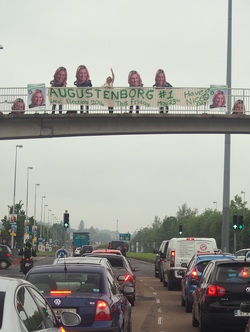
Certain social and demographic groups in Ireland, such as young voters, renters, immigrants, “recent movers”, and the socially deprived, are less likely to turn out to vote, which tends to lead to politics which is socially and demographically biased. Even women’s choices are less represented. OECD statistics indicate that in Ireland, men outvote women by more than 5 percentage points.
Though most studies on voter turnout focus on delineating the demographics of voters versus non-voters, a recent study indicates those who feel more informed about politics are more likely to vote than those who don’t. Having stepped into the role of a local election candidate, I’ve realised what a challenge it is to be an informed and active voter in this country. There is a lot of confusion at the doors, and with only two days remaining until the election, people still don’t know when voting day is; who is standing in their constituency; or which candidates are running locally or for Europe. The only way people know an election is imminent is from the nuisance posters crowding every lamp post, and the reams of leaflets stuffing their letter boxes. Even with all that political advertising, voters are only exposed to a sub-set of the candidates on the ballot, and receive almost no information about the candidates’ policies or previous voting records.
There is no single authority taking responsibility to inform voters about who their candidates are for this election. It is left up to each candidate to attempt to reach the voters individually, leading to the larger, better resourced parties and sitting Councillors maintaining their foothold in the constituency. At the doors, I repeatedly hear residents say, “We want new people representing us”, but the current methods of campaigning favour the status quo: Canvassing door-to-door is an inefficient way to reach voters; and posters only inform voters of your gender, appearance and party affiliation (if you’re able to spot that in the small print); Leaflets won’t reach every household and often go straight into the recycling bin. None of these strategies are enough to make an informed decision.
For local elections, the County Councils should educate voters about the potential candidates available to them. Below, I suggest three actions which should be implemented before the next local election to improve voter education and turnout. If elected on Friday, I will work to implement them in Dun Laoghaire Rathdown County.
1. Publish and distribute a voter’s guide to each household. A portion the sitting Councillors’ current printing budgets should be reallocated to print and distribute a voter’s guide to every household. Candidates should each be allocated one page so that voters can browse their CVs, as they would if selecting someone for any other job. This would reduce the number of wasteful, expensive leaflets going into people’s letterboxes and allow voters to directly compare all candidates. The guide should also report on sitting Councillors’ voting records during the previous term and instruct people how to fill out their voting ballot to reduce the number of incomplete ballots.
2. Allocate local poster areas and prohibit rampant postering. Posters are prohibitively expensive for the smaller parties and independent candidates and an eyesore in our communities, but they are currently the only way to reach a large number of voters without expensive advertising. Councils’ should allocate designated areas, such as libraries, bus shelters and town centres, where each candidate can display one small poster to make people aware of the elections without littering our communities with wasteful posters.
3. Organise public “meet the candidates” events. The current system of door-to-door canvassing is an inefficient and time consuming way to attempt to make contact with voters. At any time, only 20-30% of people are home to answer the doors, let alone have the time to discuss politics. At night, elderly and single people are too nervous to answer the door, while parents of young children are struggling with bedtime routines. During the day, many people are away at work. The County should organise public events in each area where residents have an opportunity to engage with all the candidates.
Voter turnout in Ireland has been steadily declining since the 1970s, yet nothing is being done to help voters feel more informed and empowered in deciding their vote. County Councils must take responsibility for alleviating this problem at the local level. Better educated voters will lead to improved voter turnout, higher quality and more responsive elected representatives, and true democracy at the local level.

 RSS Feed
RSS Feed
